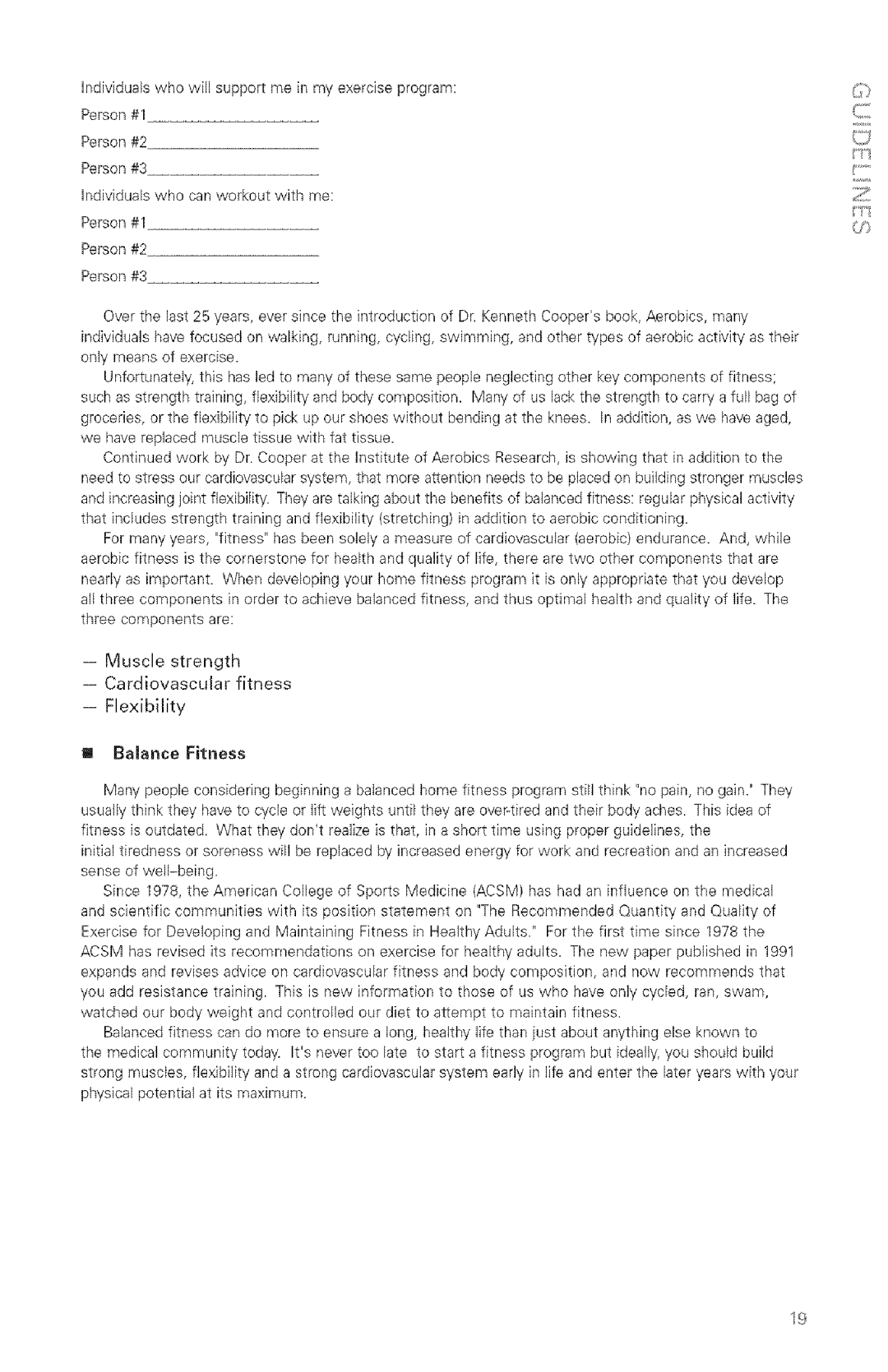
Individualswhowillsupportme in my exercise program:
Person #1
Person #2
Person #3
Individualswho can workoutwith me:
Person #1
Person #2
Person #3
Over the last 25 years, ever since the introduction of Dr. Kenneth Cooper's book, Aerobics, many individuals have focused on walking, running, cycling, swimming, and other types of aerobic activity as their only means of exercise.
Unfortunately, this has led to many of these same people neglecting other key components of fitness; such as strength training, fiexibifity and body composition. Many of us lack the strength to carry a full bag of groceries, or the flexibifity to pick up our shoes without bending at the knees. In addition, as we have aged, we have replaced muscle tissue with fat tissue.
Continued work by Dr. Cooper at the Institute of Aerobics Research, is showing that in addition to the need to stress our cardiovascular system, that more attention needs to be placed on building stronger muscles and increasing joint flexibility. They are talking about the benefits of balanced fitness: regular physical activity that includes strength training and flexibility (stretching) in addition to aerobic conditioning.
For many years, "fitness" has been solely a measure of cardiovascular (aerobic) endurance. And, while aerobic fitness is the cornerstone for health and quality of life, there are two other components that are nearly as important. When developing your home fitness program it is only appropriate that you develop all three components in order to achieve balanced fitness, and thus optimal health and quality of life. The three components are:
--Muscle strength
--Cardiovascular fitness
-Flexibility
I! Balance Fitness
Many people considering beginning a balanced home fitness program still think "no pain, no gain." They usually think they have to cycle or lift weights until they are
initial tiredness or soreness will be replaced by increased energy for work and recreation and an increased sense of
Since 1978, the American College of Sports Medicine (ACSM) has had an influence on the medical and scientific communities with its position statement on "The Recommended Quantity and Quality of Exercise for Developing and Maintaining Fitness in Healthy Adults." For the first time since 1978 the ACSM has revised its recommendations on exercise for healthy adults. The new paper published in 1991 expands and revises advice on cardiovascular fitness and body composition, and now'recommends that you add resistance training. This is new information to those of us who have only cycled, ran, swam, watched our body weight and controlled our diet to attempt to maintain fitness.
Balanced fitness can do more to ensure a long, healthy life than just about anything else known to the medical community today. It'snever too late to start a fitness program but ideally, you should build strong muscles, flexibility and a strong cardiovascular system early in life and enter the later years with your physical potential at its maximum.
If
